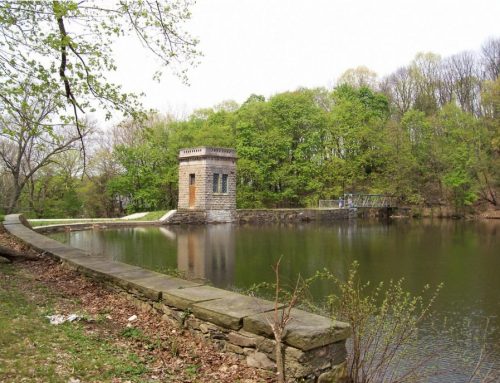The Mount Penn scenic lookout at the southern end of Skyline Drive in Reading is situated on some of the oldest and structurally most complicated rocks in the state.
Below: Mount Penn scenic lookout at the southern end of Skyline Drive.

These rocks are part of the Reading Prong section of the New England physiographic province. They include Middle Proterozoic gneissic rocks (both “felsic to mafic” and “hornblende” types), which are over a billion years old. The gneisses were eroded and overlain by Cambrian sands that were lithified to sandstone and then metamorphosed to quartzite (Hardyston Formation). Together these rocks were folded and thrusted over the area from the southeast during the Taconic mountain-building event about 450 million years ago.
Below: Mount Penn, Berks Co., Reading, lat: 40.33623, Ion: -75.90552 (parking); Reading 7.5-minute quadrangle.

Thus, the Reading Prong rocks are considered a “nappe”—a package of rolled and transported rocks. In this area, the nappe was moved over carbonate rocks (limestone and dolomite) of the Great Valley. Further deformation occurred about 150 million years later during the Alleghanian mountain-building episode, which added more structural features for geologists to untangle. The quartzite is erosion resistant and the gneiss a little less so, but both rock types stand as high islands above the surrounding softer sedimentary rocks.
Below: Dedication plaque for Skyline Boulevard mounted on a boulder of quartzite.







Leave A Comment